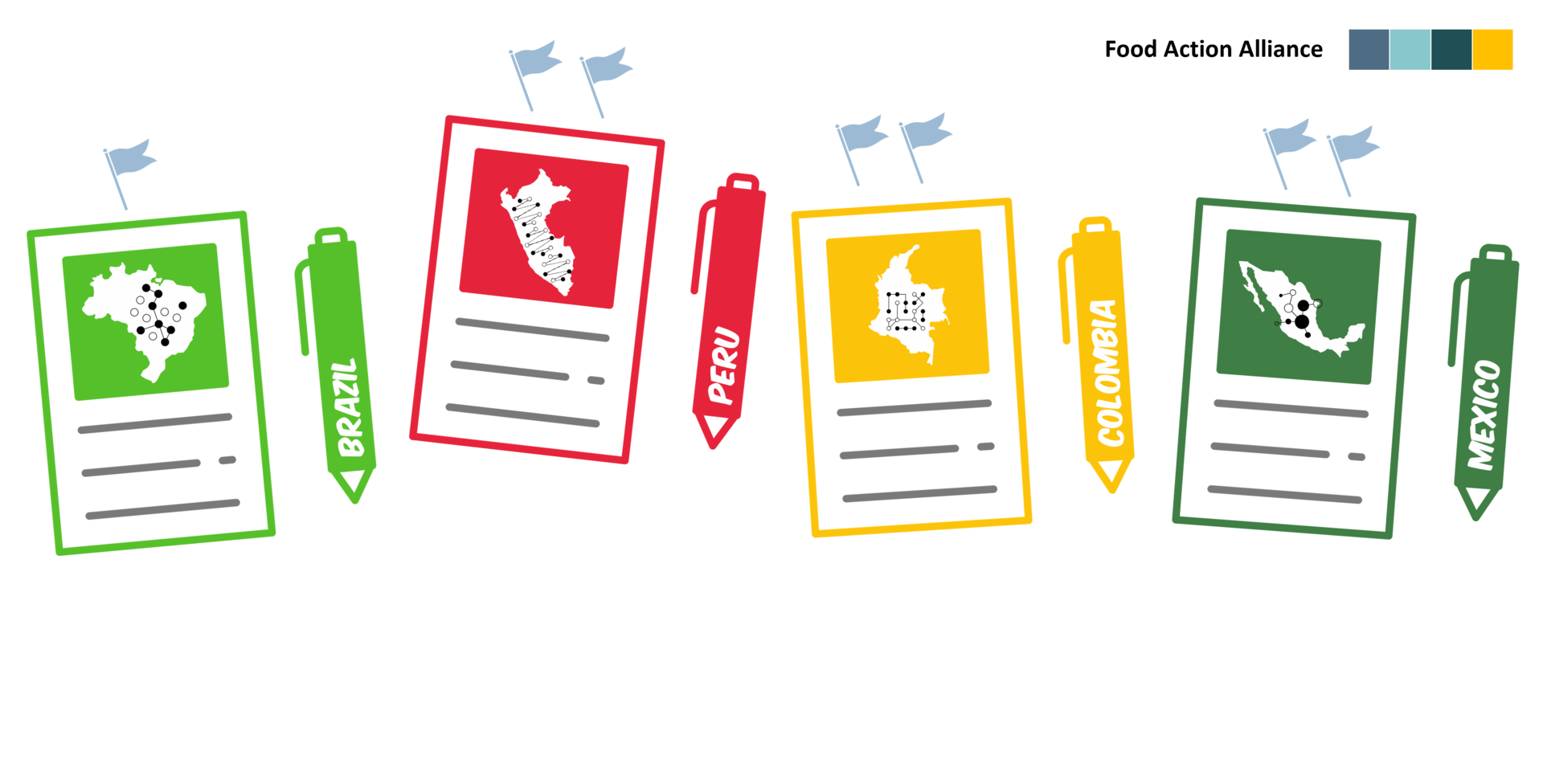How does the Food Action Alliance (FAA) relate to United Nations Food Systems Summit (UNFSS)

Previous blogs in this series introduced the Food Action Alliance (FAA), its criteria to design and select flagship projects that take a food systems approach, and the resulting portfolio of FAA flagship projects and pipeline initiatives in Latin America. In this final blog, we explain how the FAA and its flagships relate to the United Nations Food Systems Summit (UNFSS) and national pathways to sustainable food systems.
The FAA has been designed as an action-oriented, multi-stakeholder food systems platform to support the coordination and implementation of country pathways for transformation of food systems. Early in the UNFSS process, the FAA was recognized by the UN Food Systems Summit (UNFSS) Secretary as one of many delivery frameworks on action for food systems transformation. As the UNFSS process progressed and country-led (public) pathways emerged as a key mechanism for action, the FAA shifted to focus its flagships and network to respond more explicitly to public sector priorities.
The UN Food Systems Summit (UNFSS), held on September 23, 2021, set the stage for global food systems transformation to achieve the Sustainable Development Goals by 2030. UN Member States convened Member State Dialogues, a multi-stakeholder consultative process whose outcomes are intended serve as inputs to inform the articulation of national pathways (captured in pathway documents or roadmaps) to sustainable food systems. These pathway documents represent a route to achieving each nation’s food system goals and focuses particularly on those in society who have the least resources and influence and tend to be hardest to reach.
In the leadup to the summit, a breadth of solutions, coalitions, commitments to action, pledges and funds were identified and emerged to support coordination, investment and implementation of food systems transformation pathways, many of which FAA flagships monitor and engage in, as relevant. Many such instances facilitate access to networks of experience and expertise, from local to global and thus represent sources of learning through the exchange of knowledge, lessons, best practices and encourage alignment and coherence in implementation of country pathways.

Along with others, the FAA stands in an ecosystem of commitments in the UNFSS Commitments Registry to advance food systems goals, with its role to serve as the connective tissue. From its entry:
“The FAA stands ready to support national and regional pathways for transforming food systems globally. It offers a long-term established platform for multi-stakeholder collaboration to achieve the SDGs. It will continue to offer intersectoral coordination and collaboration among a broad group of stakeholders, sharing learnings and the most promising and innovative models of collaboration in support of country-driven agendas.”
As a next step, the FAA Latin America Team conducted an assessment of the alignment of the Brazil, Colombia, Mexico and Peru national pathways alignment with flagship revealing various entry points for synergistic collaboration in the coordination and implementation of national pathways. In this sense, the FAA will serve as a launchpad for the long-term continuation of the UNFSS goals toward delivering the 2030 Agenda.
